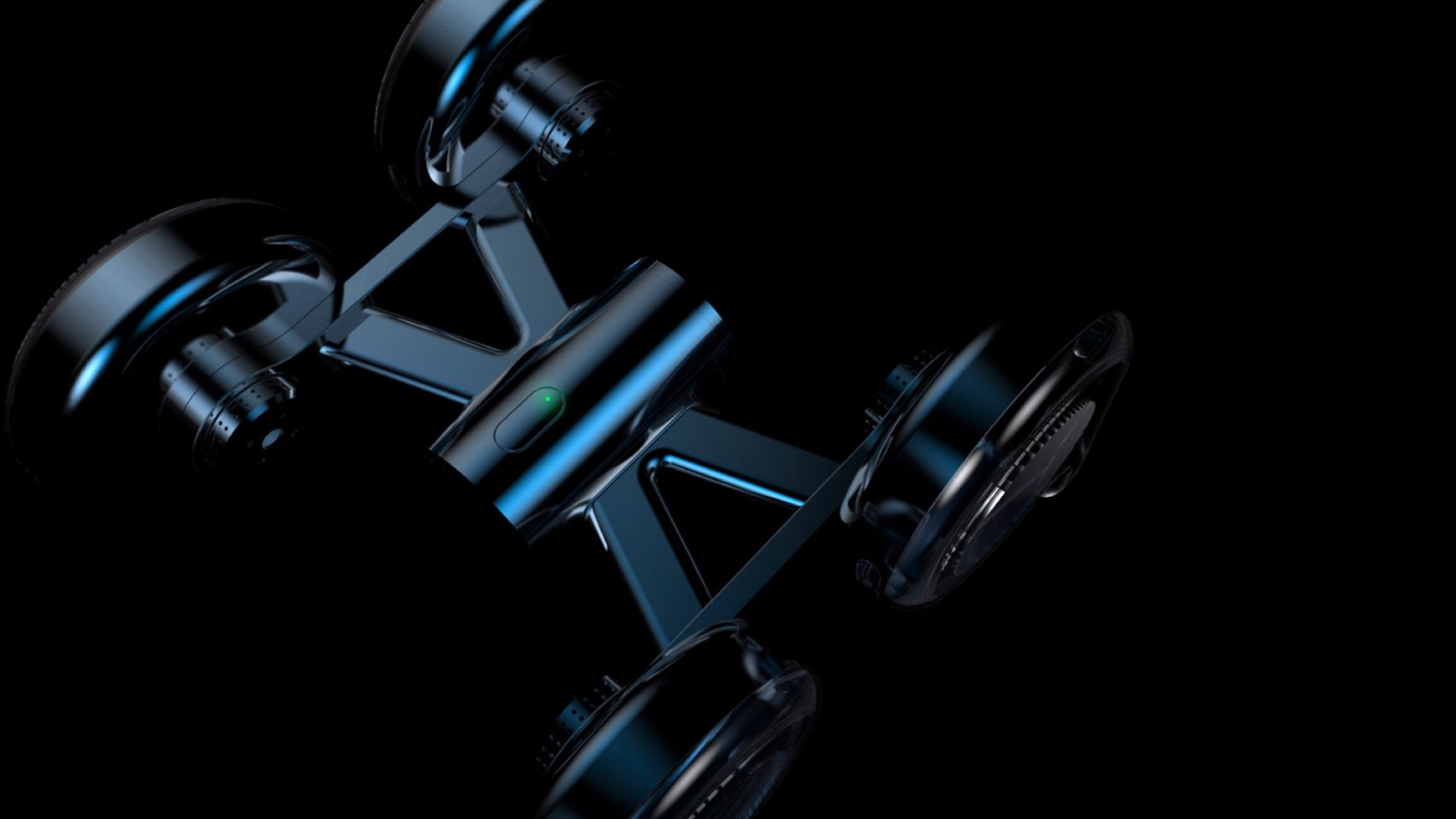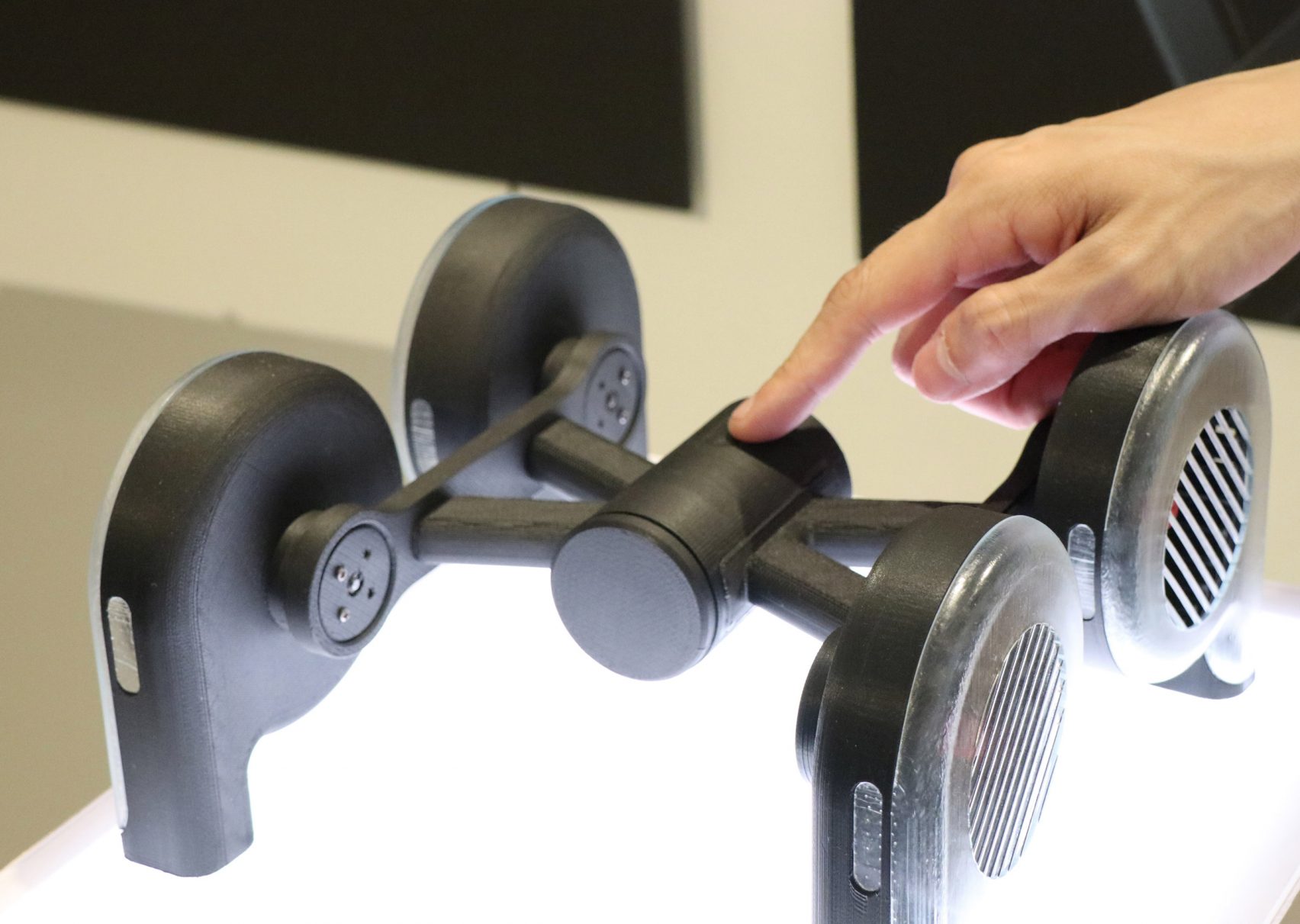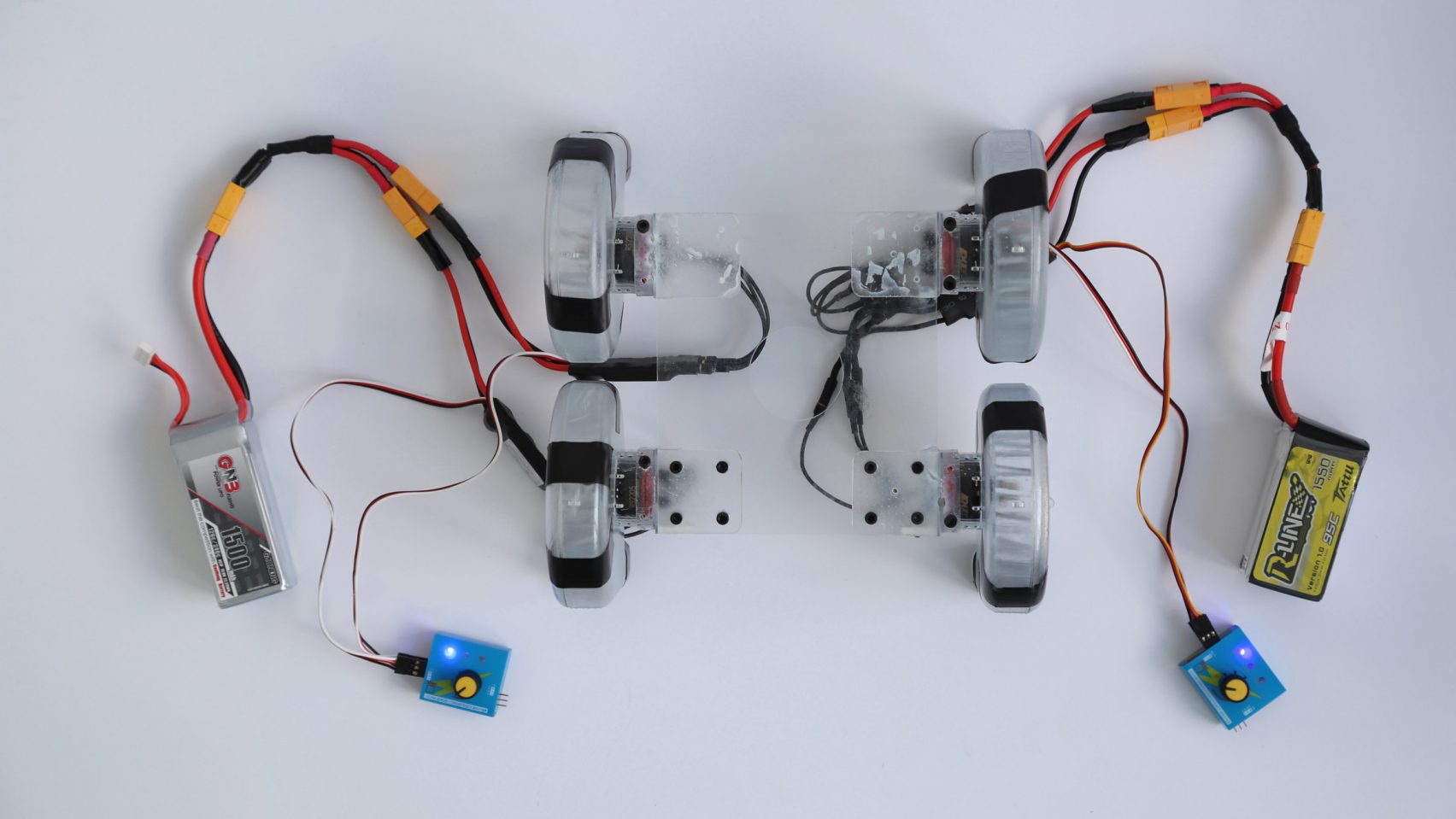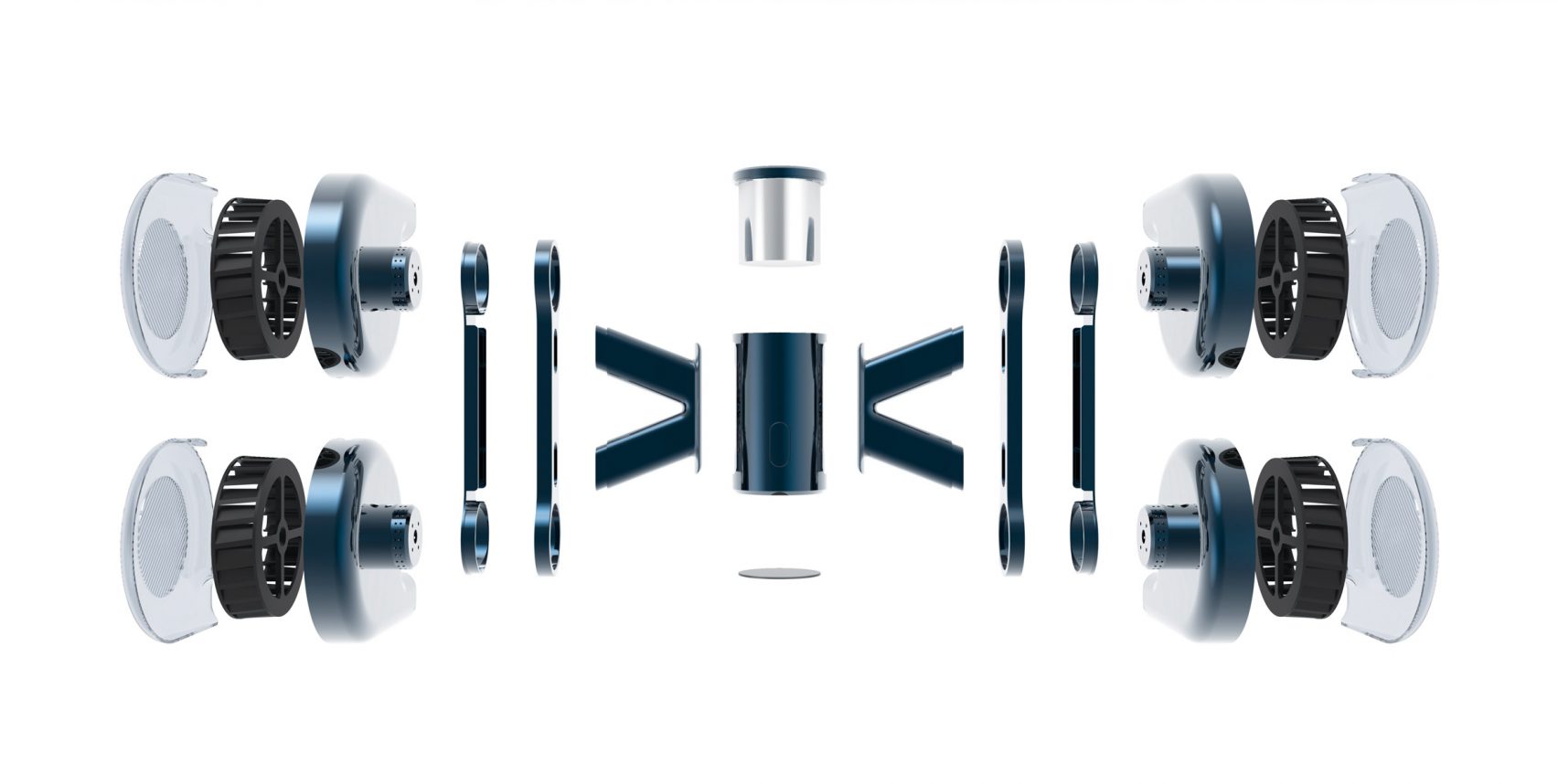Royal College of Art graduate Marcus Kung has designed a drone that can fly without propellers, with the aim of reducing injuries. The Impeller Drone — Kung’s graduate project as part of the RCA‘s masters programme in Design Products — flies using four air blowers, instead of exposed rotor blades like most drones.
Kung created the product in an effort to make drones safer for casual users and bystanders.
“Drones are popular but they’re dangerous,” Kung told Dezeen. “The most common drone accident is people getting cut and hurt by the drones exposed rotor blades. A kid got his eyeball cut open by them.”
“So I started questioning whether there’s anything that in the future could replace rotor blades,” Kung continued. “I looked into different kinds of technologies and eventually I found this system, the blower impeller. I redesigned it, put it on the drone and started vertical takeoff tests.”
The impeller system sucks air in through the vents on the side of the drone and then accelerates it through a circular duct, creating an upward thrust as the air is pushed out through the bottom.
For now, the motor efficiency does not compare well with a standard drone, but Kung hopes that can be improved with more development.
An additional benefit to the Impeller Drone is that it is quieter that one operating with rotor blades. But in Kung’s eyes, preventing injury was the primary goal.
“It can be used by non-professional drone users and filming [professional] drone users,” he said. “For non-professional drone users, because they don’t know how to control drone properly, they might hurt them self and the people surround them.”
For filming drone users, when they do the filming at a concert or a sports game, they don’t have to worry about it hurting the audience,” he continued.
Kung has managed to realise his take on the concept with a working prototype — although not without difficulty. Sixteen earlier prototypes failed to fly.
Drones were described as “potentially as disruptive as the internet” in the Dezeen documentary Elevation, released earlier this year. It documented the technology’s impact on architecture, infrastructure and everyday life.
Impeller Drone was on display at the Royal College of Art as part of their annual degree show.
Source: de zeen





Guess this is really just a matter of terminology. This UAV uses centrifugal blowers, not a conventional screw propeller. As a result, the blades are called impellers and not propellers. They still serve the same function to accelerate the air to produce thrust.
Interesting concept. This also could be done with a ducted fan.
Niel